Features of the games that had to be abandoned - analysis of developers
- Transfer
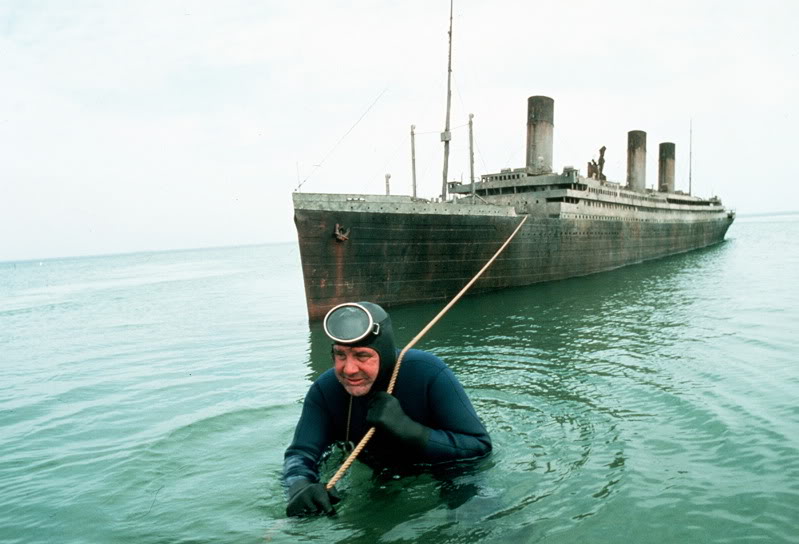
At the end of 2017, we told stories about the sunk costs in game development.
More than a dozen developers talked about the price they had to pay to ignore the “red flags” and how they continued to work on bad features or entire projects that were doomed to failure, simply because they invested too much time in them, money or energy.
Shortly after the article was released, Axiom Verge developer Tom Happ suggested we look at the problem from a different perspective: what about good games or features that were abandoned in vain?
This mistake, like the mistake of sunk costs, is very simple to make. Game development requires juggling with many disparate but interdependent elements, so it’s hard to keep track of which ones have lost their meaning and which ones should be prioritized. Many of the respondents noticed that it is much more difficult to assess the need to abandon some “features” of games.
Many elements are cut off much earlier than the end of the game, when the game itself and its systems only take their form, and such a cut-off is rarely an independent event that does not affect, either positively or negatively, other parts of the project. If we continue the analogy with juggling, then if one ball is allowed to fall, then the rest becomes much easier to control. On the other hand, falling, he can knock other balls off the trajectory.
Veteran developer Noah Falstein said: “The problem with repentance when giving up functions is that often the best parts of the game are unexpected for developers, or at least have an unexpected effect. Much of what a designer might consider fantastic is just adequate. Game design is still both art and science, so such a success is pretty difficult to predict. ”
Nevertheless, as we shall see, much can be learned from thought experiments. Even the fact, for example, that the developer’s consciousness can themselves be affected by the complexity of predicting the importance of decisions made in design and the removed functions.
Mateusz Tomashkevich, lead designer of CD Projekt RED quests, says: “We cut from The Witcher 3one quest. Players had to infiltrate Wild Hunt to eliminate one of its generals - the Quarantine. In the process of completing the quest, the players could learn more about the motives of the Wild Hunt and communicate more with its representatives. At first glance, it looks cool and advantageous for the game, and sometimes I was tormented by doubts - was it worth it to get rid of this quest? But he created a lot of design problems. ”
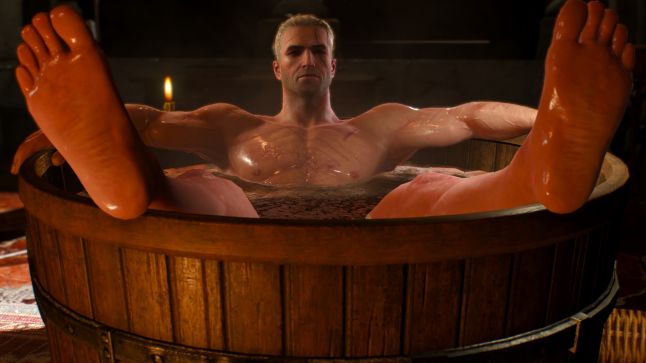
In the case of this quest, the developers had to think about the player not killing everyone on the spot. We also had to consider the need to create new animations of movement in heavy armor. In addition, there were a bunch of other problems that could not be eliminated after several iterations of the quest design.
Radical change of direction
Tom Happ spoke about one more specific example of a slaughtered game, which, perhaps, should not be canceled. He worked as an engineer at Petroglyph Games during the development of the canceled MOBA End of Nations , which, as directed by the publisher of Trion Worlds, went through a long development cycle through several design changes, after which it finally acquired the MMORTS format. Happy says that the game finally took shape at the end of 2012, and that it was the best RTS that he had to play.
“I couldn’t wait for her release to play with other people around the world. But when we had already finished all our work and a week or two remained, we all wondered: “She should have been released on day X, why does Trion slow down?” We moved to a new office, expecting to switch to EON support with parallel work over other games. On the day of the move, we found that the game was canceled. "
Worse, Petroglyph had to make massive layoffs to cope with financial failure due to this unexpected change. Meanwhile, Trion moved the development into its own departments and turned End of Nationsin MOBA, having cut out almost all the RTS systems, over which the developers have been working hard for years, only to cancel this version already next year .
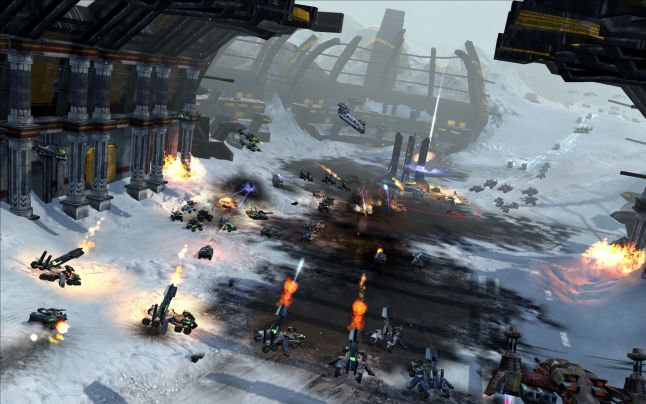
The suddenness of these events and the absence of warnings from Trion about dissatisfaction with the appearance of the game influenced Happy's psychological state. “To this day I feel trauma (recently there was a five-year anniversary of these events). We often hear about injuries when we talk about violence with the use of weapons or rape, but I think that such dismissals should also be considered an injury, and not only me was fired. It seemed to me that the whole world had changed in one evening. ”
Question producer / designer Michael Kelly learned from the wrong development direction change he witnessed while working on AAA projects at 2K Games.
“A change in direction when developing a video game is like turning an ocean liner. Having a huge team and / or several studios, decisions cannot be made instantly. Having gained experience, I decided that it was necessary to determine the scale of the game in the early stages and review them as often as possible, up to the minimum core of the game, if necessary. The functions that go into the finished product need enough polishing time; instead, do not create a bunch of optional makeweights, scattering the efforts of the team. "
He cites The Bureau: XCOM Declassified as an example.. Its development was carried out in different places by different teams with different visions, and each of them left its mark on the design and code. When the new team set about refactoring the old work for a new development direction, it did not have the resources to start over. “We had workflows for graphics and code that could not be deleted, even though the features for which they were needed were no longer in the game.”
When you make a serious turn in the direction of game development, Kelly explains, you not only create inefficient work processes, but also harm the inertia of the movement - many functions need to be redone, and some tools suitable for the old work are not suitable for the new one. “And you have less money and time to complete. Or to justify the investment, you need to sell 30% more copies than in the original project. If you released the game in the original design, at the same time you would have the opportunity to pull income to the desired level. " (As a tip in Kelly’s career, he adds that it’s better to have another released game in the resume than a gap of a year or two without a game, and it’s better to have ten years of experience with several games than with zero or one, as was the case in the unfortunate over Duke Nukem Foreverthroughout the development period.)
In many projects, it does not matter, is whether the new direction to be better than the old. Sometimes, turns can be successful, and ready-made games are distinguished by a bright personality and holistic design, but more often developers find that decisions made once come back to interfere with them: “I think that many developers who spent several years changing directions, they ask themselves: “What would happen if we just got rid of idle features, doubled investments in the basic game cycle and released the game, and did not spend another year (and a lot of effort) trying to transform it into a new design, success which is also not guaranteed by anything? ""
External factors
There are many reasons for cutting features out of the game during development. Some of them are related to the quality (or lack thereof) or to the compatibility of features with the project, but many factors that lead to cutbacks are actually external. For example, Starcraft: Ghost was canceled for the most part because for several years Blizzard spent all its resources on World of Warcraft .
The development team of Medal of Honor: Airborne spent more than a year due to EA's requirement to switch from Quake III to Renderware 4.0 (only to switch to Unreal 3 later after 16 months of torment with raw Renderware 4.0). In Dead Space 3 is also having problemscaused by changes in EA requirements: most of the depth and complexity of the narrative, for the lack of which the game was often criticized for, was carved out in favor of microtransactions and marketing tasks; at the same time, the promising remake of Tomb Raider 10th Anniversary , developed by Core Design, was canceled despite an impressive demo , because the publisher Eidos / SCi changed his mind and handed over a remake of Crystal Dynamics, which at that time had just completed the Tomb Raider Legend .
Creative Director, UnravelMartin Sakhlin talks about one case when, right before the release of the game, at the request of the marketing department, the control method he worked on was completely cut out. “Perhaps the marketing was right,” he says. “I don’t know, but it seems to me that the whole game was simply gutted.”
Far less often, quality features or entire games fall prey to pessimistic business strategies. An experienced artist and illustrator, Marc Ferrari once told me about the canceled X-Men game that he worked on in the 1990s. The team had a tiny budget and schedule, but Ferrari and colleagues managed to figure out how to create a good game using tricks with a palette. For example, one graphic file could display an alley with trees and clouds in one palette, and a city with bridges and highways in another.
“We sent the game to publishers, expecting an enthusiastic call and congratulations on an amazing product for such little money and little time,” recalls Ferrari. “But the only thing we got was a very angry call to the head of our department from the head of the project in that big company with the words:“ We did not ask you this, and you let us down very much. ”
The client company was angry because if she released this really good 8-bit game for the TV controller, she would have made the rest of the line of games already sold in stores too weak against its background and unsuitable for the market. The game was too good to release.
Happy recalls a less serious example of a feature cut out of the game for economic and marketing reasons. “I was a technical game artistTiger Woods PGA Tour 2008 and 2009. " To replace helmet-like polygonal hairstyles, in 2009, one of his colleagues tried to insert a dynamic hair system from the Battlefield franchise .
“He managed to create two or three hairstyles that worked with this hair system, and they looked much better. But management refused to use them unless all hair options were replaced with this new system. ”
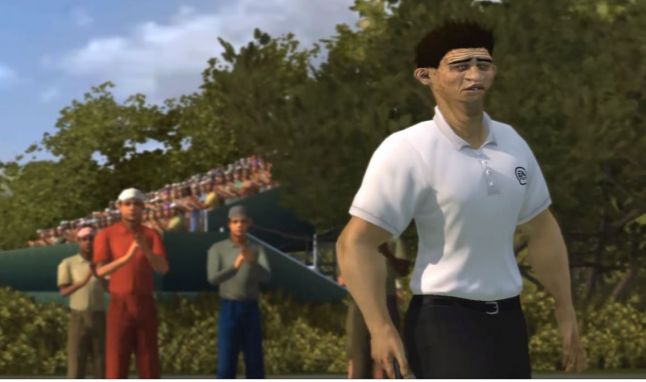
Hair from Tiger Woods PGA Tour 2009 in action
The development team did not have the resources to implement such a transition in one year, so they returned to their existing hairstyles. The latest game in the series, Rory McIlroy PGA Tour 15 , still uses polygonal helmet hair, most likely for the same reason.
Contractual obligations
The entire career path of Fun Bits co-founder and CEO Chris Millar is dotted with wonderful multiplayer modes that you had to abandon. After leaving Blizzard in 2002, Millar went from game to game with amazing multiplayer modes, which almost without exception were cut in favor of mediocre single-player gameplay.
The first game was Goblin Commander, an early attempt to implement a real-time strategy on consoles that Chris worked on at Jaleco. “We had [online] multiplayer, working on PC and on Xbox. At that time, platform manufacturers adhered to the rule: “Everyone should have everything the same, or everyone should have everything unique.” But if we had released multiplayer mode on the Xbox, then the PlayStation and Gamecube would not have allowed us to get certified, because we had a feature that was not suitable for their platform. ”
To release on all three platforms, the developers had no choice: they had to cut the multiplayer. Goblin Commander was released on all platforms with only modes for one and two split-screen players, which disappointed critics and, according to Millar, prevented the game from gaining its worthy success.
Then he moved to Lionhead, where he first helped complete the development of Fable , and then, in a team of 80 people, he began work on a hybrid of the God simulator / RTS Black and White 2 . It was an ambitious game, and Millar appeared just in time. He was fascinated by the construction modes of the city and multiplayer. He describes the first as “insanely cool” relaxed gameplay in the Farmville style , the second - as the most interesting game mode in the format of “monster against the city” and “god against god”. However, the realities of contractual obligations, limited budget and lack of time forced management to make a difficult decision.
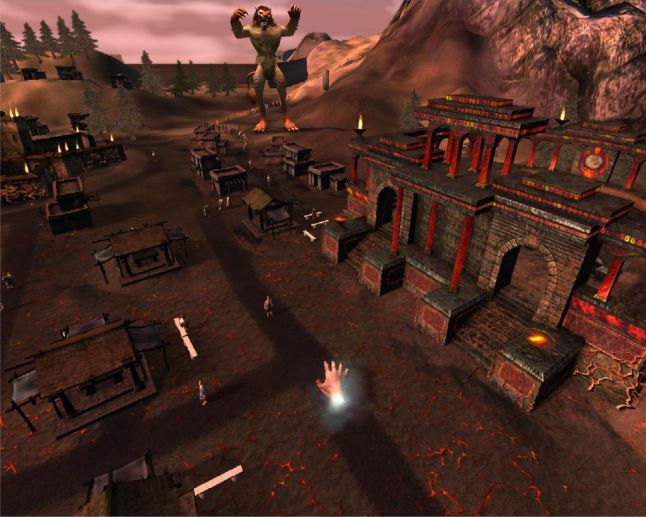
Faced with the possibility of canceling the game in the event of a deadline failure, the developers threw out the free urban development mode and cut out the multiplayer, which, despite its interestingness and uniqueness, could not remain the only game mode.
After learning the lesson, Millar drew attention to the PSN and decided that since all buyers of PSN games already have a network connection (otherwise they could not download the game), he can first of all deal with multiplayer. This led to the creation of the critically acclaimed cult hit Fat Princess , an action-RTS for 32 players, which at the last minute at the request of Sony turned out to be a limited single-player mode.
However, Millar again had to meet with his curse of canceling the multiplayer mode in the sequel for PS4. Its prototype was initially developed only for multiplayer, but then took the form of a cooperative campaign with the planned multi-user mode in the form of an add-on (which was already ready for release), because Sony chose a different direction. After the release, the game failed miserably because fans and critics did not appreciate this new direction. Millar is not mad at Sony and calls the company a “wonderful partner,” but the decision to shift the focus from multiplayer to campaign mode has paid off - according to Millar, “the company refused to negotiate a new contract. And we had to reduce staff. ”
For Millar, who is again trying to create the first multi-player mode in Squids from Space , from this experience it became clear that it is critically important to focus on the most interesting aspect for the audience, even before you start experimenting with other elements and game modes. For him and for the companies in which he worked, it was an online multiplayer. If you implement the basic functions correctly, then this gives a chance to reach the target audience. After that, Fun Bits wants to use this basic functionality in other directions, but only after the company has a solid foundation of the game, interesting and attractive for the gaming community.
No cuts without prejudice
Although it is difficult to predict in advance which functions create or destroy the game, and which could take the game’s design to a new level, it’s important to have the courage to refuse what you, as a team, are not sure of, even if it disappoints or frightens someone away. part of the audience of the game.
Bruce Shelley cites a major company meeting during the development of Age of Empires III as an example of this . It was dedicated to a complex system of formations. “The votes were divided as follows: approximately 51% for the preservation, 49% for the rejection of them, and we had to make a choice. “For the majority decision to be taken, it was not enough, we needed at least 80%, not 50 or 51. Despite the fact that half of the team liked this feature, we had to refuse it.”
It is also important to remember that no cutback goes without damage and extra work. “Refusing functions, it is necessary to make many changes in other places. That is, yes, of course, you can win some production time necessary for completion. But you’ll have to devote time to adapt the rest of the content to the changes, ”says Tomashkevich.
Martin Sakhlin emphasizes that when you refuse features in the development process, they are not completely forgotten. “It’s quite interesting to look back and evaluate the cut-out functions, imagining what they might become. Sometimes we find something useful for the future. ”
